A well-seasoned cast iron skillet is a kitchen essential for any home cook. Not only does it provide excellent heat distribution for even cooking, but it also creates a natural non-stick surface. Seasoning a cast iron skillet is a simple process that involves coating the surface with a layer of oil and heating it in the oven. The result is a durable, non-stick coating that can last for years with proper care. In this blog, we will cover the basics of cast iron skillet seasoning, including the benefits of seasoning and step-by-step instructions for seasoning your skillet. Learn the best techniques for seasoning your cast iron skillet, including what oil to use and how long it should be heated. Get started now with our detailed guide!
Table of Contents
- The Basics of Cast Iron Skillet Seasoning
- The Benefits of Cast Iron Skillet Seasoning
- The Different Methods of Cast Iron Skillet Seasoning
- How to season a rusted cast iron skillet?
- How to Prep Your Cast Iron Pan for the Seasoning Process
- Tips and Tricks to Maintaining Your Skillet's Perfectly Seasoned Finish
- Here are some frequently asked questions related to cast iron skillet seasoning:
The Basics of Cast Iron Skillet Seasoning
Cast iron skillets are a great addition to any kitchen, but they require a bit of maintenance to keep them in top shape. One of the most important things you can do to maintain your cast iron skillet is to properly season it. Here are the basics of cast iron skillet seasoning:
Clean the skillet: Before seasoning your cast iron skillet, you need to clean it thoroughly. Use hot water and a stiff brush to remove any food residue or rust. Do not use soap as it can strip the skillet of its seasoning.
Dry the skillet: After cleaning, dry the skillet completely using a towel or by placing it on the stove on low heat for a few minutes.
Apply a thin layer of oil: Using a paper towel or a clean cloth, apply a thin layer of oil (such as vegetable oil, flaxseed oil, or coconut oil) to the entire surface of the skillet, including the handle.
Heat the skillet: Preheat your oven to 350°F. Place the skillet upside down on the oven rack to allow any excess oil to drip off. Bake the skillet for 1 hour.
Repeat: After 1 hour, turn off the oven and let the skillet cool in the oven. Repeat this process 2-3 times for the best results. Each time you season your skillet, it will become more non-stick and easier to cook with.
Maintain the seasoning: To maintain your cast iron skillet's seasoning, avoid using soap and abrasive cleaners. Instead, use a stiff brush and hot water to clean the skillet. After cleaning, dry the skillet completely and apply a thin layer of oil before storing it.
Proper seasoning is essential for keeping your cast iron skillet non-stick and rust-free. By following these basic steps, you can maintain your cast iron skillet's seasoning and enjoy delicious meals cooked to perfection for years to come.
The Benefits of Cast Iron Skillet Seasoning
There are several benefits to properly seasoning a cast iron skillet, including:
- Non-stick surface: One of the main benefits of seasoning a cast iron skillet is that it creates a natural non-stick surface. This makes cooking and cleaning much easier and helps prevent food from sticking to the skillet.
- Rust prevention: Seasoning a cast iron skillet creates a protective layer that helps prevent rust and corrosion from forming on the surface of the skillet.
- Improved flavor: Over time, a well-seasoned cast iron skillet develops a unique flavor that can enhance the taste of your food. This is due to the oils and fats that are absorbed into the skillet's surface during the seasoning process.
- Versatility: A well-seasoned cast iron skillet can be used for a variety of cooking methods, including frying, sautéing, baking, and even grilling.
- Durability: Cast iron skillets are known for their durability and can last for decades when properly maintained. Seasoning helps protect the skillet from damage and prolongs its lifespan.
In addition to these benefits, seasoning a cast iron skillet is also an eco-friendly way to cook. Cast iron skillets are made from natural materials and can be used over and over again, reducing the need for disposable cookware. Overall, properly seasoning a cast iron skillet is essential for maintaining its quality and ensuring delicious meals for years to come.
The Different Methods of Cast Iron Skillet Seasoning
There are several methods for seasoning a cast iron skillet, each with its own advantages and disadvantages. Here are the most common methods:
Oven seasoning: This is the most popular method for seasoning a cast iron skillet. First, preheat your oven to 350°F. Next, clean the skillet with soap and water, and then dry it completely. Rub a thin layer of oil (such as vegetable oil, flaxseed oil, or coconut oil) onto the skillet, making sure to coat the entire surface. Place the skillet upside down on the oven rack and bake for 1 hour. Turn off the oven and let the skillet cool inside the oven. Repeat the process several times for the best results.
Stovetop seasoning: This method is similar to oven seasoning but is done on the stovetop. First, clean the skillet with soap and water, and then dry it completely. Rub a thin layer of oil onto the skillet, making sure to coat the entire surface. Heat the skillet on medium heat for about 10 minutes, or until the oil starts to smoke. Remove the skillet from the heat and let it cool. Repeat the process several times for the best results.
Flaxseed oil seasoning: Flaxseed oil is a popular choice for seasoning cast iron skillets because it creates a hard, non-stick surface. First, clean the skillet with soap and water, and then dry it completely. Rub a thin layer of flaxseed oil onto the skillet, making sure to coat the entire surface. Place the skillet upside down on the oven rack and bake at 400°F for 1 hour. Turn off the oven and let the skillet cool inside the oven. Repeat the process several times for the best results.
Bacon seasoning: This method involves cooking bacon in the skillet to create a natural non-stick surface. First, cook several strips of bacon in the skillet, making sure to cover the entire surface. Once the bacon is cooked, remove it from the skillet and discard it. Pour off any excess grease and use a paper towel to wipe the skillet clean. Repeat the process several times for the best results.
Each method of seasoning a cast iron skillet has its own advantages and disadvantages. The oven method is the most popular and provides consistent results, while the stovetop and bacon methods are more hands-on but can be effective as well. Flaxseed oil seasoning is more time-consuming, but it can create a hard, durable surface. Ultimately, the method you choose will depend on your personal preference and the condition of your cast iron skillet.
How to season a rusted cast iron skillet?
If your cast iron skillet is rusted, you'll need to remove the rust before seasoning it. Here's how to do it:
- Scrub the skillet: Use a stiff-bristled brush or steel wool to scrub away any rust or food particles. If the rust is stubborn, you can use a mixture of salt and oil to help loosen it. Once you've scrubbed away as much rust as possible, rinse the skillet with warm water and dry it thoroughly.
- Apply vegetable oil: Rub a thin layer of vegetable oil onto the skillet, making sure to cover the entire surface. Use a paper towel to wipe away any excess oil.
- Preheat the oven: Preheat your oven to 350°F.
- Bake the skillet: Place the skillet upside down on the oven rack and bake it for 1 hour. After 1 hour, turn off the oven and let the skillet cool inside the oven.
- Repeat the process: You may need to repeat this process several times to fully season the skillet and create a non-stick surface. Be sure to apply a thin layer of oil before each baking session
- Store the skillet: Once the skillet is fully seasoned, store it in a dry place. Avoid stacking other cookware on top of it, as this can damage the seasoning.
Remember, prevention is the best defense against rust. Always dry your cast iron skillet thoroughly after each use and avoid leaving it in a damp or humid environment. With proper care and maintenance, your cast iron skillet can last for generations.
Here are two additional techniques for removing rust and seasoning from a rusted cast iron skillet:
1. Boiling water and salt technique:
- Mix 1/4 cup of salt with 2 quarts of water in a large pot or Dutch oven.
- Place the rusted skillet in the pot and bring the water to a boil.
- Boil the skillet for 15-20 minutes, or until the rust has loosened.
- Use tongs or a pot holder to remove the skillet from the pot and place it on a towel to cool.
- Use a stiff-bristled brush or steel wool to scrub away any remaining rust.
- Rinse the skillet with warm water and dry it completely.
-
Rub a thin layer of vegetable oil onto the skillet and bake it in the oven according to the seasoning instructions above.
2. Vinegar, baking soda, and metal scrubber technique:
- Mix equal parts white vinegar and water in a spray bottle.
- Spray the rusted skillet with the vinegar solution and let it sit for 10-15 minutes.
- Sprinkle a generous amount of baking soda onto the skillet and use a metal scrubber to scrub away the rust.
- Rinse the skillet with warm water and dry it completely.
- Rub a thin layer of vegetable oil onto the skillet and bake it in the oven according to the seasoning instructions above.
Both of these techniques can be effective for removing rust and seasoning a cast iron skillet. However, it's important to note that excessive use of harsh chemicals or abrasives can damage the seasoning or even the skillet itself. It's always best to use gentle, natural methods whenever possible.
How to Prep Your Cast Iron Pan for the Seasoning Process
Before seasoning your cast iron pan, you should prep it to ensure it is clean and free of any residue or rust that could interfere with the seasoning process. Here are the steps to prep your cast iron pan:
- Scrub the pan with hot, soapy water: Use a stiff-bristled brush or a scrubber sponge to clean the pan with hot water and a mild soap. This will remove any dirt or food residue that may be on the surface of the pan.
- Rinse the pan thoroughly: Rinse the pan with hot water to remove any soap residue.
- Dry the pan: Dry the pan thoroughly with a clean, dry towel or paper towels. Make sure to remove all the water from the pan, as any remaining water can cause rust.
- Remove any rust: If there is any rust on the pan, you can remove it with a steel wool pad. Scrub the rusty areas until the rust is removed.
- Apply a thin layer of oil: Apply a thin layer of vegetable oil, canola oil, or flaxseed oil to the surface of the pan. Use a paper towel or a clean cloth to spread the oil evenly over the surface of the pan.
Once you have prepped your cast iron pan, you can proceed with the seasoning process. The seasoning process will help to create a non-stick surface on the pan and prevent it from rusting.
Tips and Tricks to Maintaining Your Skillet's Perfectly Seasoned Finish
Once you have successfully seasoned your cast iron skillet, it is important to maintain its perfectly seasoned finish. Here are some tips and tricks to help you maintain your skillet's seasoning:
- Clean your skillet properly: Avoid using soap on your skillet, as it can strip the seasoning. Instead, use hot water and a stiff-bristled brush to clean the skillet. Dry the skillet thoroughly with a clean towel or paper towel.
- Apply a thin layer of oil: After each use, apply a thin layer of oil to the skillet to help maintain its seasoning. You can use a paper towel or cloth to apply the oil.
- Store your skillet properly: Store your skillet in a dry place to prevent it from rusting. You can also store it with a paper towel or cloth to absorb any moisture.
- Avoid acidic foods: Avoid cooking acidic foods in your skillet, such as tomato-based sauces or citrus fruits. These foods can break down the seasoning.
- Re-season as needed: Over time, the seasoning on your skillet may start to wear down. If this happens, you can re-season the skillet by following the same steps as before.
By following these tips and tricks, you can help maintain your skillet's perfectly seasoned finish and keep it in great condition for years to come.
Here are some frequently asked questions related to cast iron skillet seasoning:
How often should I season my cast iron skillet?
You should season your cast iron skillet whenever it starts to look dull or when the seasoning starts to wear off. Depending on how often you use your skillet and how well you maintain it, you may need to season it once or twice a year.
Can I use any oil to season my cast iron skillet?
You can use any oil with a high smoke point, such as vegetable oil, canola oil, or flaxseed oil. Avoid using low smoke point oils, such as olive oil or butter, as they can burn and create a sticky residue.
Can I wash my cast iron skillet with soap?
While some people prefer not to use soap on their cast iron skillet, it is safe to use soap as long as you rinse the skillet thoroughly and dry it completely afterward. Soap can help remove stubborn food residue and is especially useful for cleaning a skillet that has not been used in a while.
Can I use my cast iron skillet on an induction stove?
Yes, cast iron skillets can be used on induction stoves. Cast iron is a magnetic material and can be heated using induction technology.
Can I cook acidic foods in my cast iron skillet?
While acidic foods can break down the seasoning on a cast iron skillet over time, it is generally safe to cook acidic foods in a well-seasoned skillet. Just be sure to avoid leaving acidic foods in the skillet for extended periods of time, and always clean the skillet thoroughly after use.

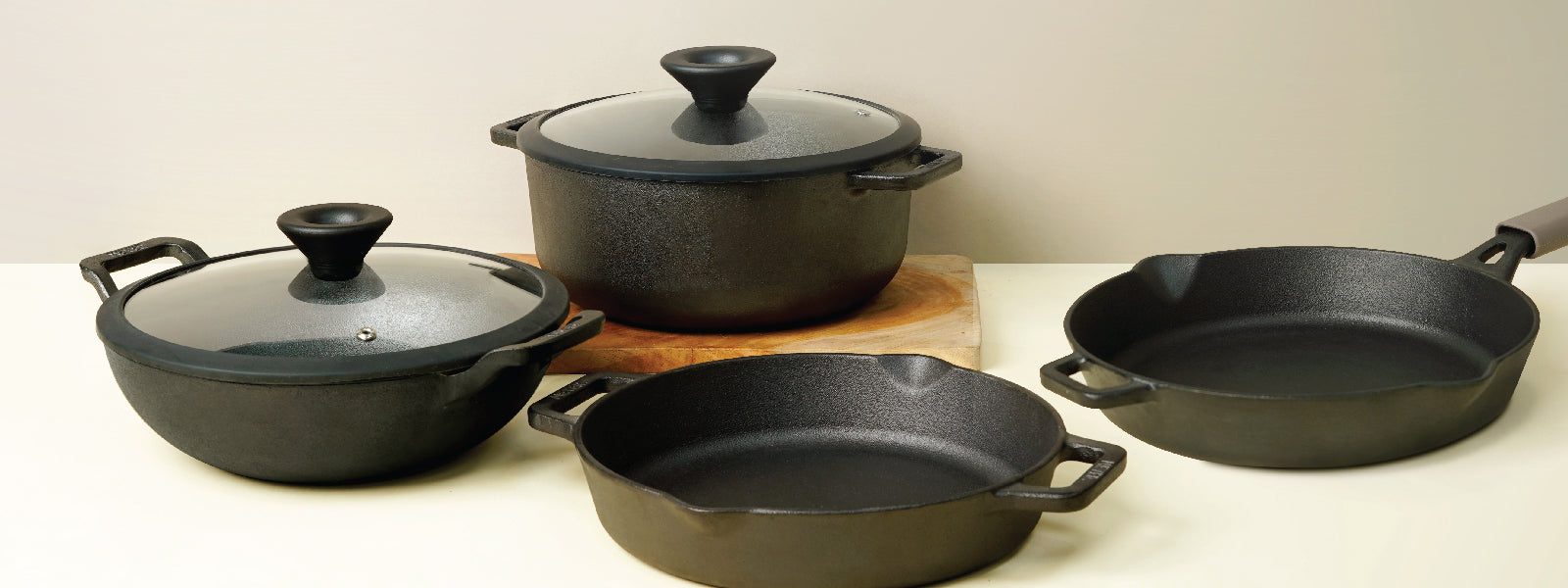
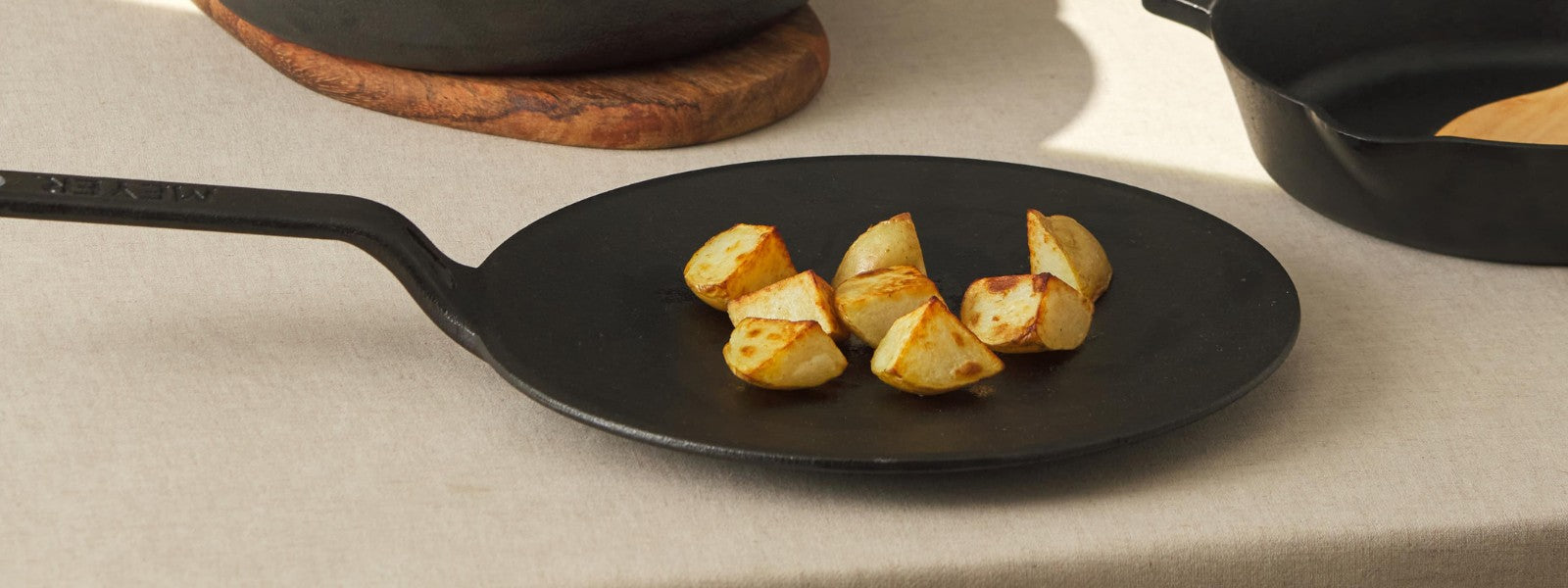
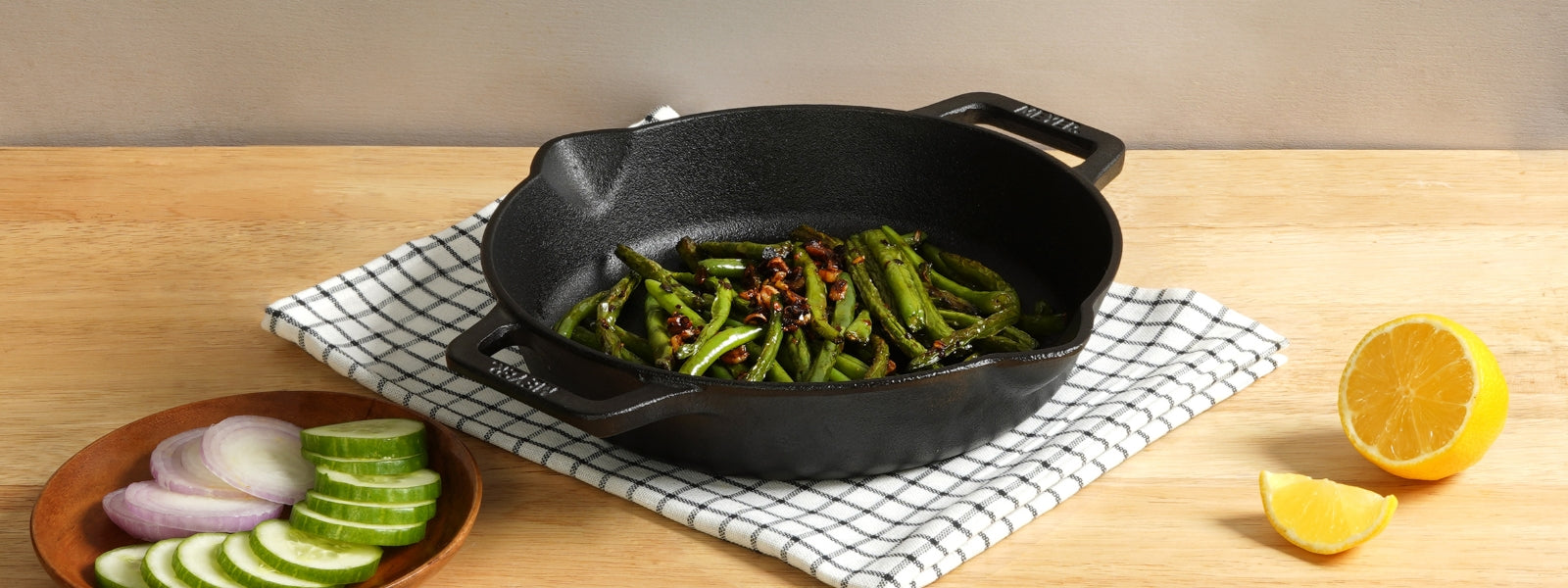
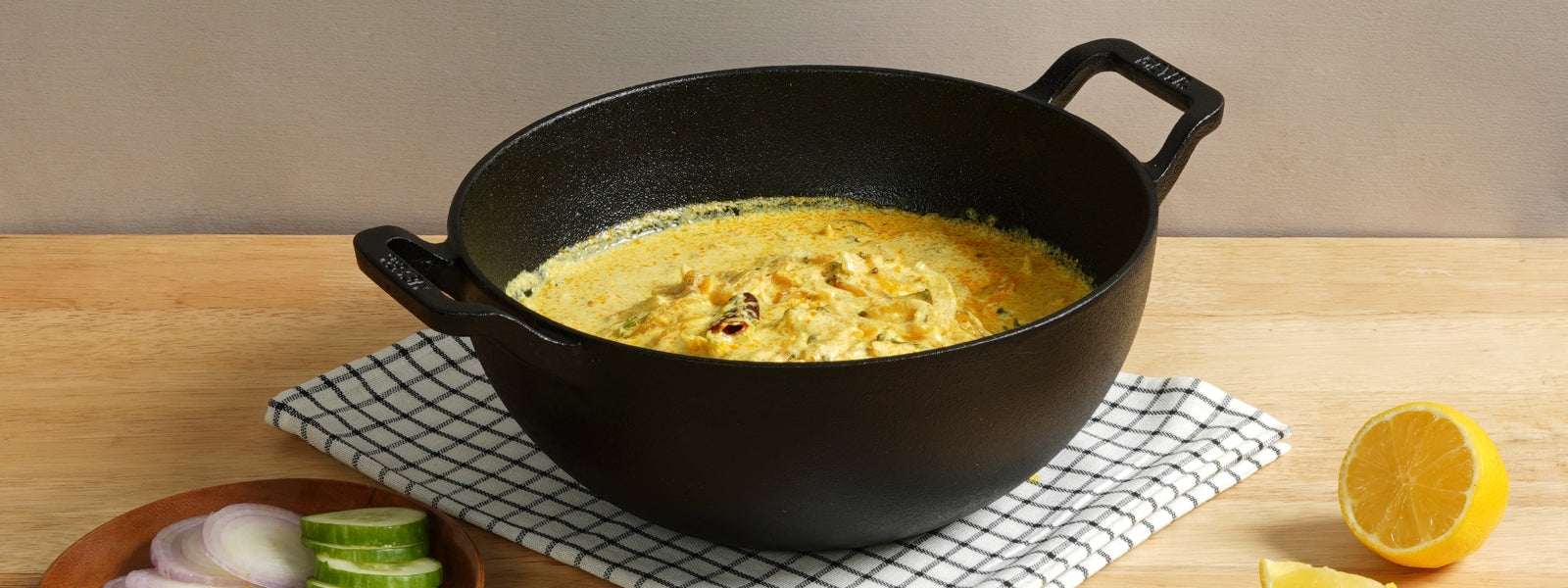
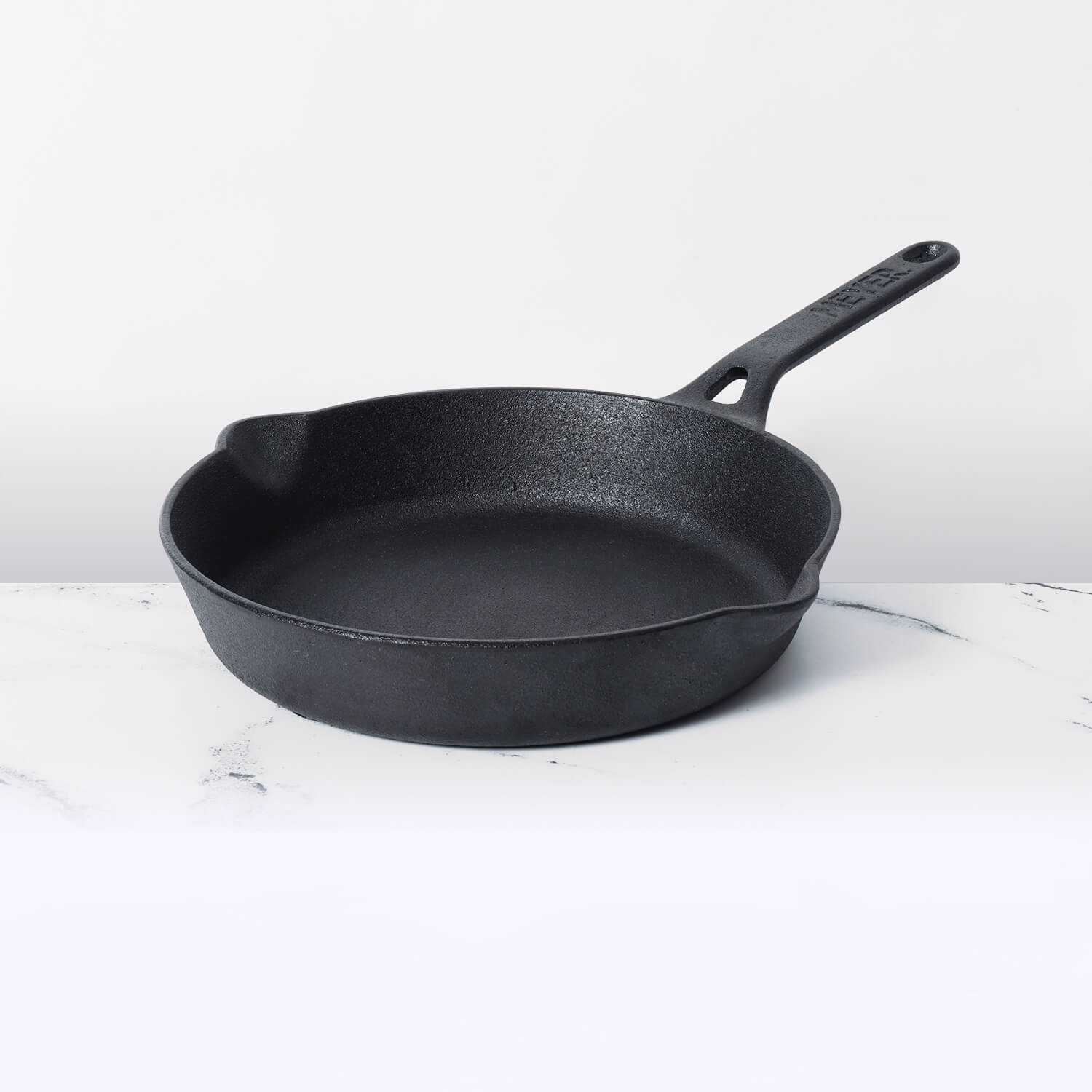
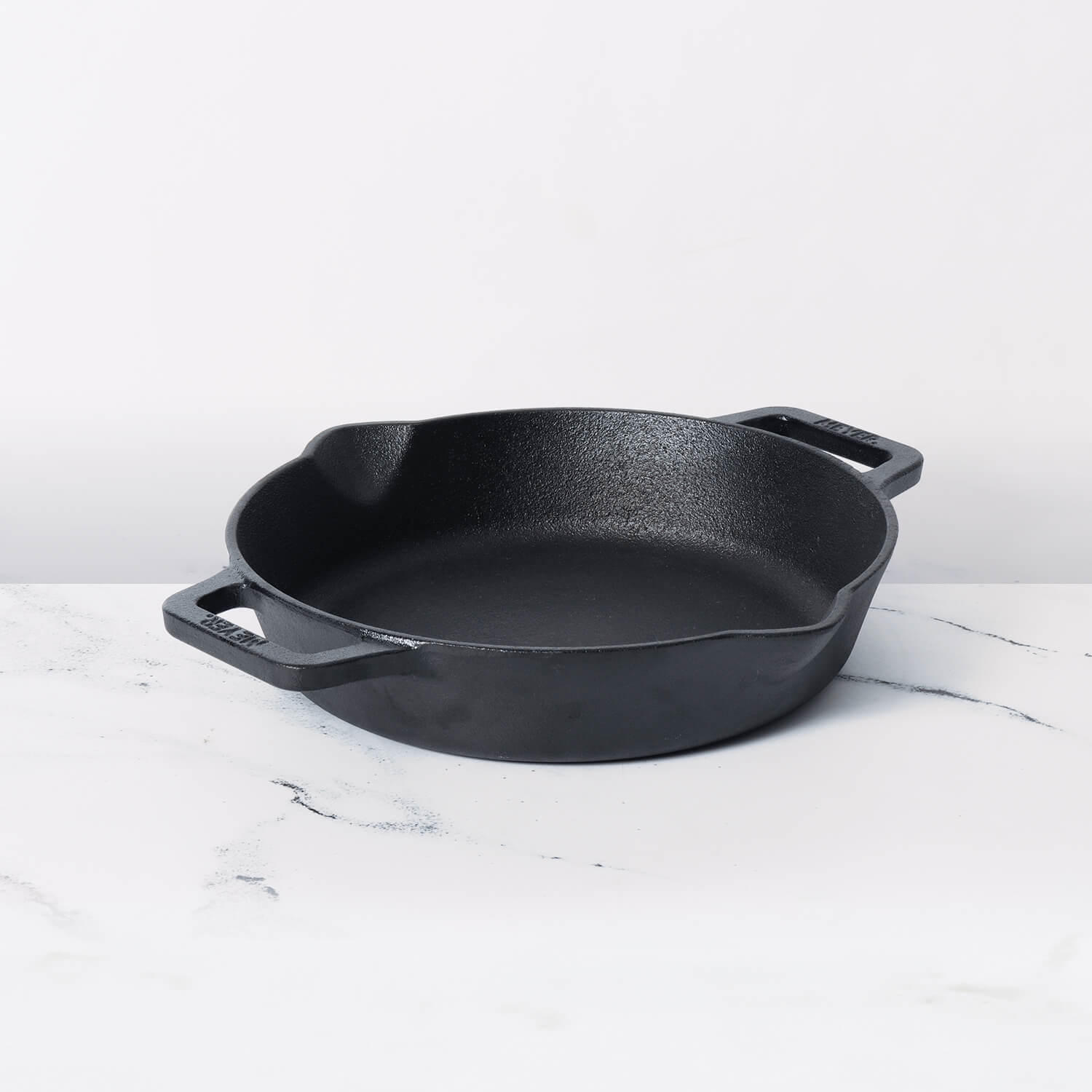




Leave a comment